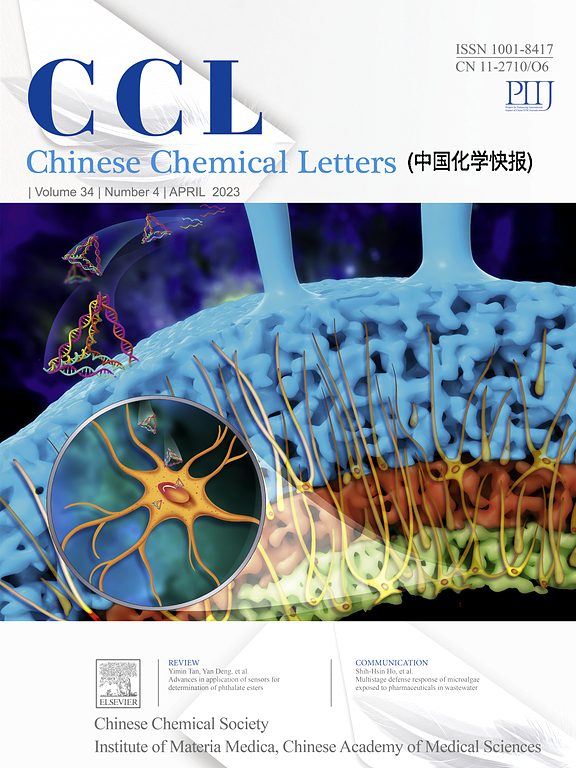Curvature and defect formation synergistically promote the photocatalysis of ZnO slabs
IF 9.4
1区 化学
Q1 CHEMISTRY, MULTIDISCIPLINARY
引用次数: 0
Abstract
Crystal defects and morphological modifications are popular strategies to enhance the catalytic activity of heterogeneous semiconductor photocatalysts. Despite defect engineering and morphology control show their successful applications in ZnO, the effects of curved surface modifications on the photocatalytic performance of ZnO and their interplay with the defect formation remain unclear. To resolve this puzzle, we systemically investigate the joint effects of curvature and defect formation on the electronic structure, optoelectronic properties, and photocatalytic performance of ZnO slabs using first-principles calculations. We find that curvature deformation effectively narrows the electronic bandgap by up to 1.6 eV and shifts the p-/d-band centers, thereby enhancing light absorption in the visible and near-ultraviolet regions. Besides, curvature deformation stimulates self-polarization, facilitating the separation of photo-generated electrons and holes. Also, curvature deformation promotes the formation of defects by reducing defect formation energy (by up to 1.0 eV), thus creating abundant reaction sites for photocatalysis. Intriguingly, the synergistic interaction between curvature and defect deformation further strengthens the self-polarization, narrows the electronic bandgaps, adjusts the p-/d-band centers to improve the optoelectronic properties, and influences the dissociation and free energy barriers of intermediates. Consequently, our findings reveal that this synergy substantially enhances the photocatalytic performance of ZnO slabs, providing deeper insights into the role of defect engineering and morphology control on photocatalysis.

曲率和缺陷的形成协同促进ZnO板的光催化作用
晶体缺陷和形态修饰是提高非均相半导体光催化剂催化活性的常用策略。尽管缺陷工程和形貌控制在ZnO上的成功应用,但曲面修饰对ZnO光催化性能的影响及其与缺陷形成的相互作用尚不清楚。为了解决这一难题,我们系统地研究了曲率和缺陷形成对ZnO板的电子结构、光电性能和光催化性能的共同影响。我们发现曲率变形有效地使电子带隙缩小了1.6 eV,并使p /d带中心移位,从而增强了可见光和近紫外区的光吸收。此外,曲率变形刺激了自极化,促进了光生电子和空穴的分离。此外,曲率变形通过降低缺陷形成能量(高达1.0 eV)来促进缺陷的形成,从而为光催化创造了丰富的反应位点。有趣的是,曲率和缺陷变形之间的协同作用进一步增强了自极化,缩小了电子带隙,调节了p /d带中心以改善光电性能,并影响了中间体的解离和自由能垒。因此,我们的研究结果表明,这种协同作用大大提高了ZnO板的光催化性能,为缺陷工程和形貌控制在光催化中的作用提供了更深入的见解。
本文章由计算机程序翻译,如有差异,请以英文原文为准。
求助全文
约1分钟内获得全文
求助全文
来源期刊

Chinese Chemical Letters
化学-化学综合
CiteScore
14.10
自引率
15.40%
发文量
8969
审稿时长
1.6 months
期刊介绍:
Chinese Chemical Letters (CCL) (ISSN 1001-8417) was founded in July 1990. The journal publishes preliminary accounts in the whole field of chemistry, including inorganic chemistry, organic chemistry, analytical chemistry, physical chemistry, polymer chemistry, applied chemistry, etc.Chinese Chemical Letters does not accept articles previously published or scheduled to be published. To verify originality, your article may be checked by the originality detection service CrossCheck.
 求助内容:
求助内容: 应助结果提醒方式:
应助结果提醒方式:


